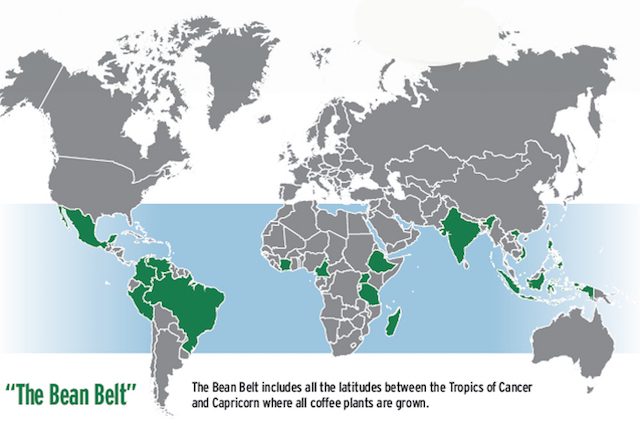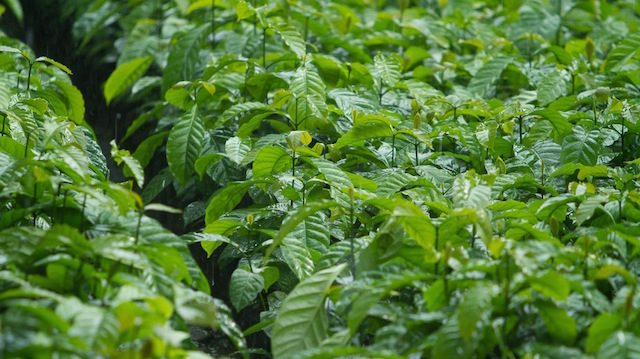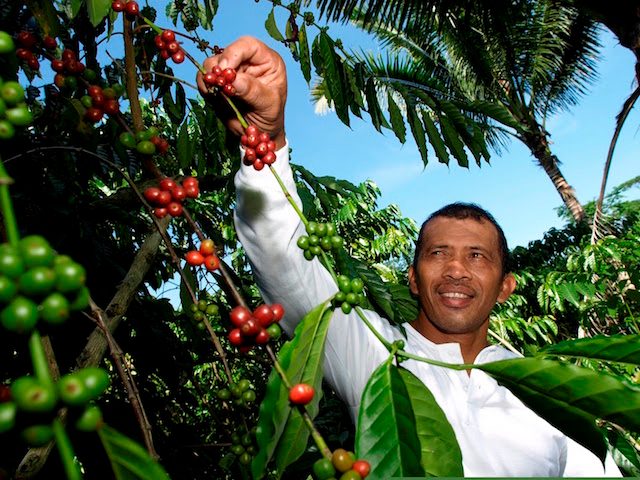SUMMARY
This is AI generated summarization, which may have errors. For context, always refer to the full article.

MANILA, Philippines — A single bean has so many stories to tell — where it came from, when it was picked, and how it was processed. But what often goes untold is the story that brews behind every cup: That of weathered hands picking ripe, cherry-red berries. Sturdy shoulders hauling heavy sacks of that morning’s harvest. And discerning eyes meticulously weeding out debris from the fresh yield.
Behind every cup of coffee is the story of a farmer, whose daily grind provides for the average Filipino’s daily coffee habit.
Unfortunately, the local coffee production industry has been in decline. Filipinos consume about 100,000 metric tons of coffee a year, but the country is only able to produce around 25% of that number annually.
In spite of the fact that the Philippines is a coffee loving nation, coffee farming comes with its own set of challenges. A coffee plantlet usually takes 3 years to mature and 5 years to maximize its yield potential, and coffee beans can only be harvested once a year. And because farms are prone to natural disasters like floods and typhoons, the chances of losing that year’s crop are great and devastating.
However, Filipinos are avid drinkers, and the good news is that for every cup of coffee consumed, especially if it’s produced locally, is already a token of support for our farmers.
Fun fact: Did you know that the Philippines is located right in the center of the coffee bean belt? That means our land is capable of growing both the Arabica and Robusta variety of beans.

The potential for our local coffee industry is a low hanging fruit just waiting to be plucked. Once upon a time, we were even the fourth biggest exporter of coffee beans in the world. Now, majority of our coffee is imported.
It is has been the goal of various organizations and brands such as Nescafé to reverse the supply situation in the Philippines, as well as empower local coffee farmers to pursue their trade. Nescafé does this through their Nescafé Plan. They help farmers improve the quality and quantity of their yield by educating them on sustainable farming practices, and providing them access to quality seedlings. What’s more, they have satellite buying stations spread across the country, where independent farmers can sell their coffee at world market prices.
September 29 is International Coffee Day. In order to spread awareness on this movement to support local coffee, here are a few things you should know about one of the country’s most popular drinks.
Planting the seeds

A young coffee plant will take 3 years before it begins to bear any fruit and 5 years to maximize its yield potential. Once it’s mature, it will bear fruit once every year. However, when a plant has reached 10 years of age, the volume of fruit begins to diminish and therefore, will require rejuvenation. All that means is that older plants will be pruned and cut to promote a healthy harvest.
Fruits of labor

Coffee beans come from coffee flowers and berries. You will know when the berries are ready for picking when they turn a vivid cherry-red. If they were picked while still green or yellow, that would result in smaller beans, which burn faster while they roast. That means, burnt and bitter tasting coffee.
The berries are then placed in a basin or tub of water. If the cherry floats, it is likely hollow and infested with pests. And if it sinks, it’s ready for the next steps. Afterward, the berries go through a meticulous process of drying, hulling to uncover the green coffee beans (the raw material for coffee), and second sorting. Next, the farmers pack the green coffee beans in jute sacks for selling to interested buyers of coffee, such as Nescafé.
The daily grind

Once the beans pass a series of tests, what’s left are the best green coffee beans. These are then roasted, at which point they crack, caramelize, and begin to exude that warm, comforting coffee aroma.
When it comes to roasting, some makers over-roast the beans to mask off unwanted notes. But in the process, it can also dilute the natural flavor of the bean. What is ideal is to roast it to a point where the natural flavor is brought out and preserved.
After the beans have been roasted, they are sold in bean form, or roasted, ground, and packed.
The campaign

The coffee process is long and detailed. But it’s a necessary process in order to give the 75 million Filipino people who drink coffee every year their fix. You are probably one of them.
Show your support to our local coffee farmers, the thousands of men and women who work hard to make sure that coffee gets to your cup. It’s as simple as knowing where your coffee came from when you get your daily coffee fix. That support could help increase local coffee supply to 50% in the next 5-10 years. And if that movement were a success, then it would contribute to another 25% increase to the local coffee farming industry.
The numbers sound big and distant, but it’s simple: Every individual can contribute. And it all starts with a cup. — Rappler.com
Add a comment
How does this make you feel?

There are no comments yet. Add your comment to start the conversation.